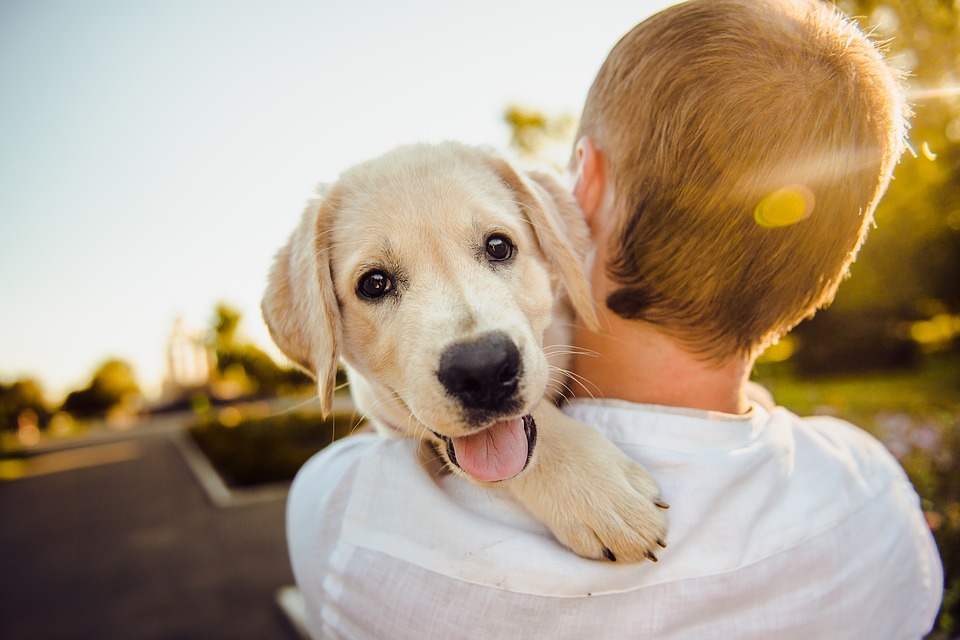Puppies are super cute, but they can occasionally bite real hard. Biting is a natural dog reaction. For us, however, a puppy bite is no fun at all. It hurts, and there is a chance of getting rabies or plague (yes!). Unfortunately, as puppies grow older, they become more forceful, their teeth become sharper, and their biting can become painful, uncomfortable, and potentially dangerous. Here are some tips on how to train your puppy to stop biting. It is certainly possible, but it will take time and patience.
Inhibition
The first step in getting your puppy to stop biting is to make him understand that we have very sensitive skin. Puppies must learn to use restraint to control their biting and mouthing of people. Without knowing the sensitivities of human skin, the dog will not learn to control his impulses. Otherwise, the dog will bite the skin hard, causing bleeding and infection.
How does inhibition work? When playing, the puppy gives its mate (playmate) a playful mouthful (soft bite, grabbing with its mouth), which can turn into a hard bite. However, the playmate responds to the bite with a cry, which scares the puppy into letting go. This works for humans as well; when the puppy bites hard, mimic crying. When the puppy lets go, ignore it for about 20 seconds and then continue playing.
Do not move away from the bite. Suddenly pulling away will stimulate the puppy’s hunting instincts, which will make the problem worse. Finally, verbal deterrence should not be repeated more than three times in a quarter of an hour for inhibition. If there is too much repetitive biting, give a time out.
Inhibition is essential because it helps your puppy recognize the difference between soft and violent play. Once you have been able to curb the strong biting, repeat the process for moderate biting and finally for no-bite mouths.

Diversion
Another effective way to control puppy biting is to use diversion. This is when your puppy tries to break or bite you, and you retract your hand before contact is made. Instead of biting your hand, turn the puppy toward a treat or a toy to chew on.
Another diversionary effect is to introduce your dog to non-contact games such as tug of war or fetch. Even in these games, the puppy should not be overly aggressive in pulling. This is where the commands “Let go” and “Go” come in handy.
Patience and Understanding
When training a playful puppy, you need to be patient and understanding. Remember that playing with his mouth is an instinct for dogs. Training a puppy takes a lot of patience and understanding.
Distractions
Puppies are very curious and will play with anything that is around them. To protect them, you need to puppy-proof your home. To do this, they need toys to chew on and bones to chew on. This will create endless distractions that your dog can constantly gnaw on. Before purchasing a toy, make sure it is safe and consider your dog’s level of destructiveness and chewability. Stuffed toys should be avoided as they often break within a few days.
Keep a favorite toy in your pocket to distract him when he tries to chew. When he bites, stay still and distract him by shaking the toy until you hear a click. When he is free after he stops chewing, you can use a reward instead of a toy (as a compliment).
In addition, to chew toys, there is another form of toy that can be pretty effective. Hide treats. This is a puzzle-like toy where the treat is hidden inside the toy, and the puppy has to find out how to get it out. This is a lot of fun and provides good mental stimulation!

Using a Leash
You can use a leash this in a time-out strategy. Keep him on a leash during training. If the puppy bites, take him to a quiet place with the leash. Keep the puppy tied up and turn your back on him for a few minutes.
Let us know if these few tips have helped you in the comments below!
